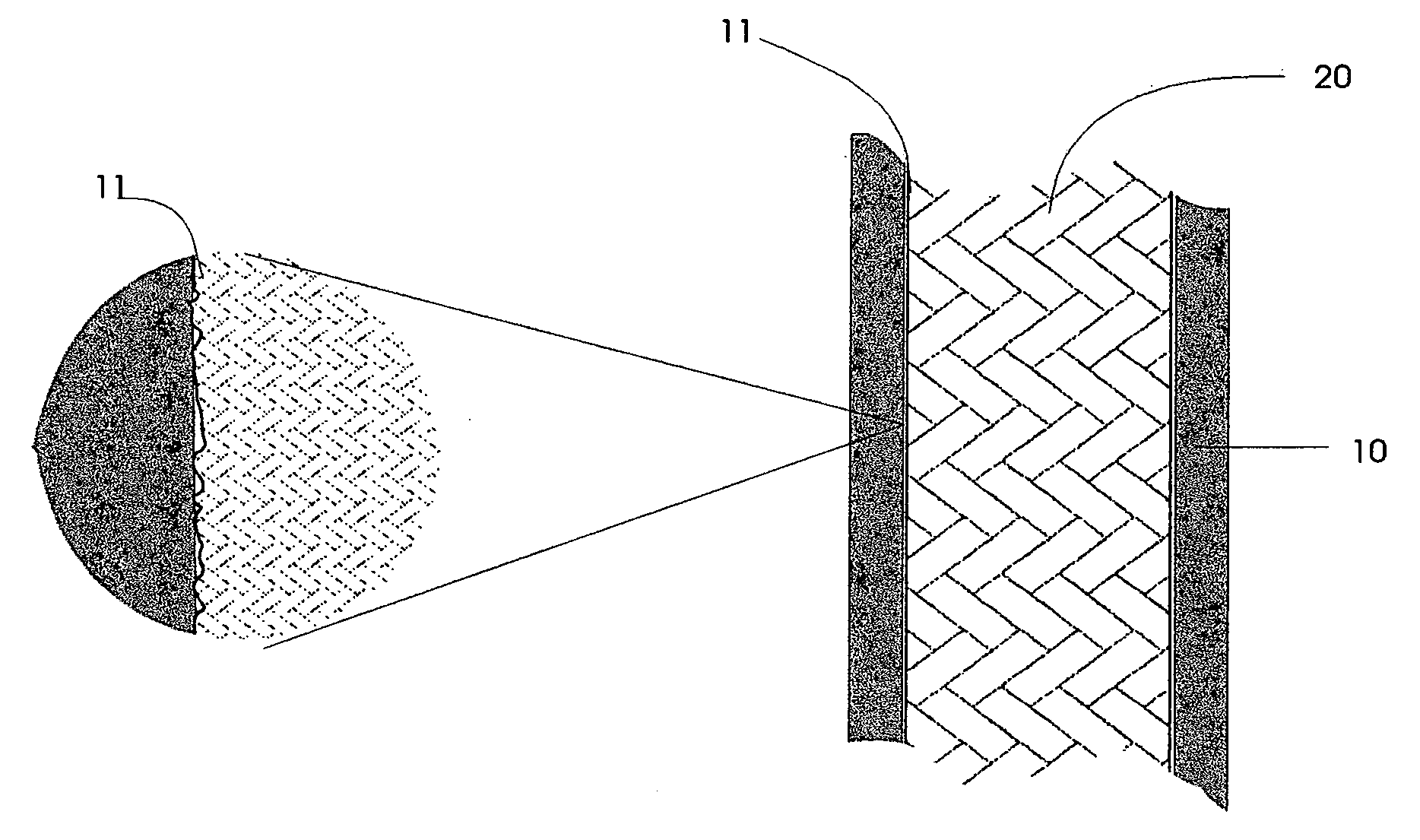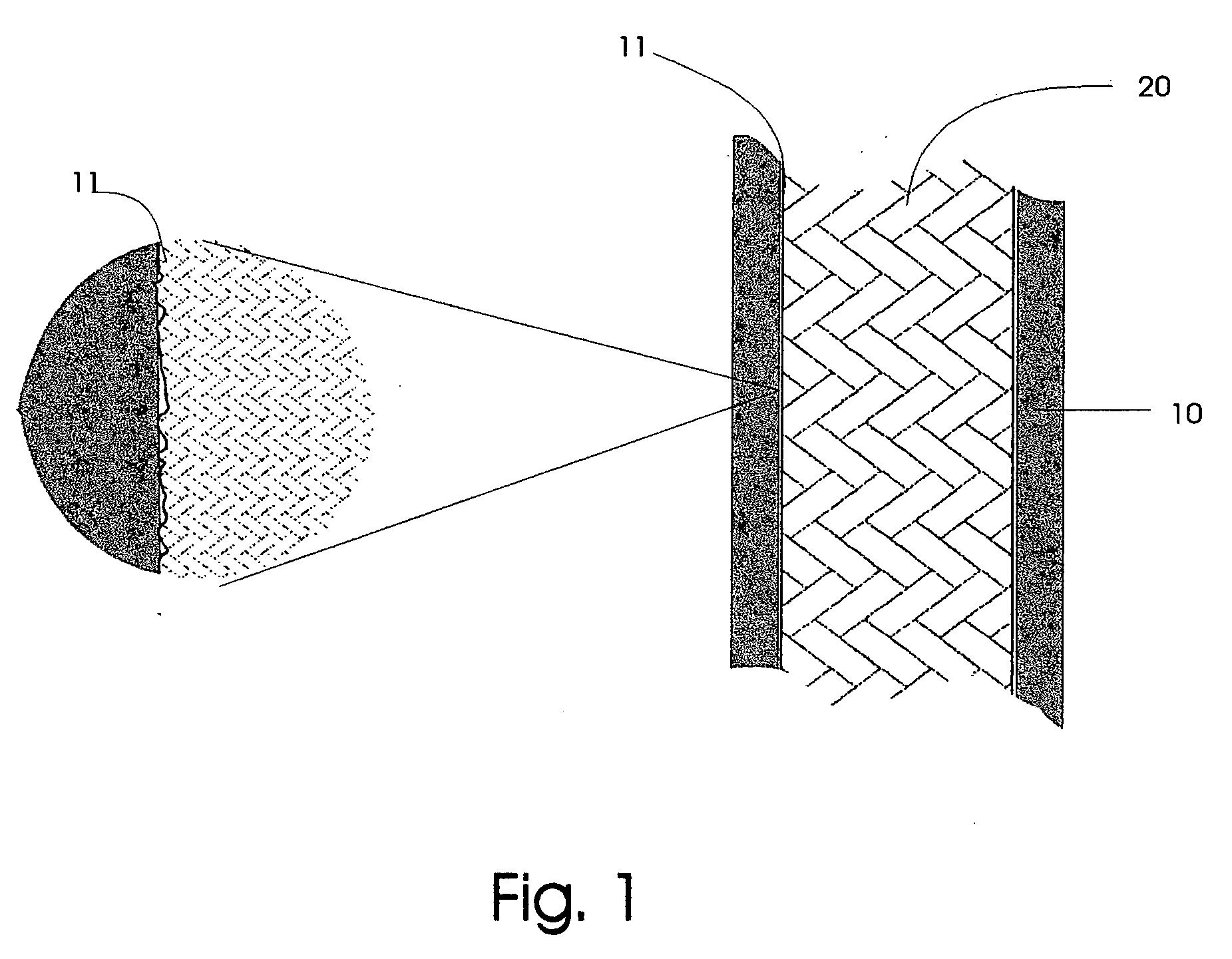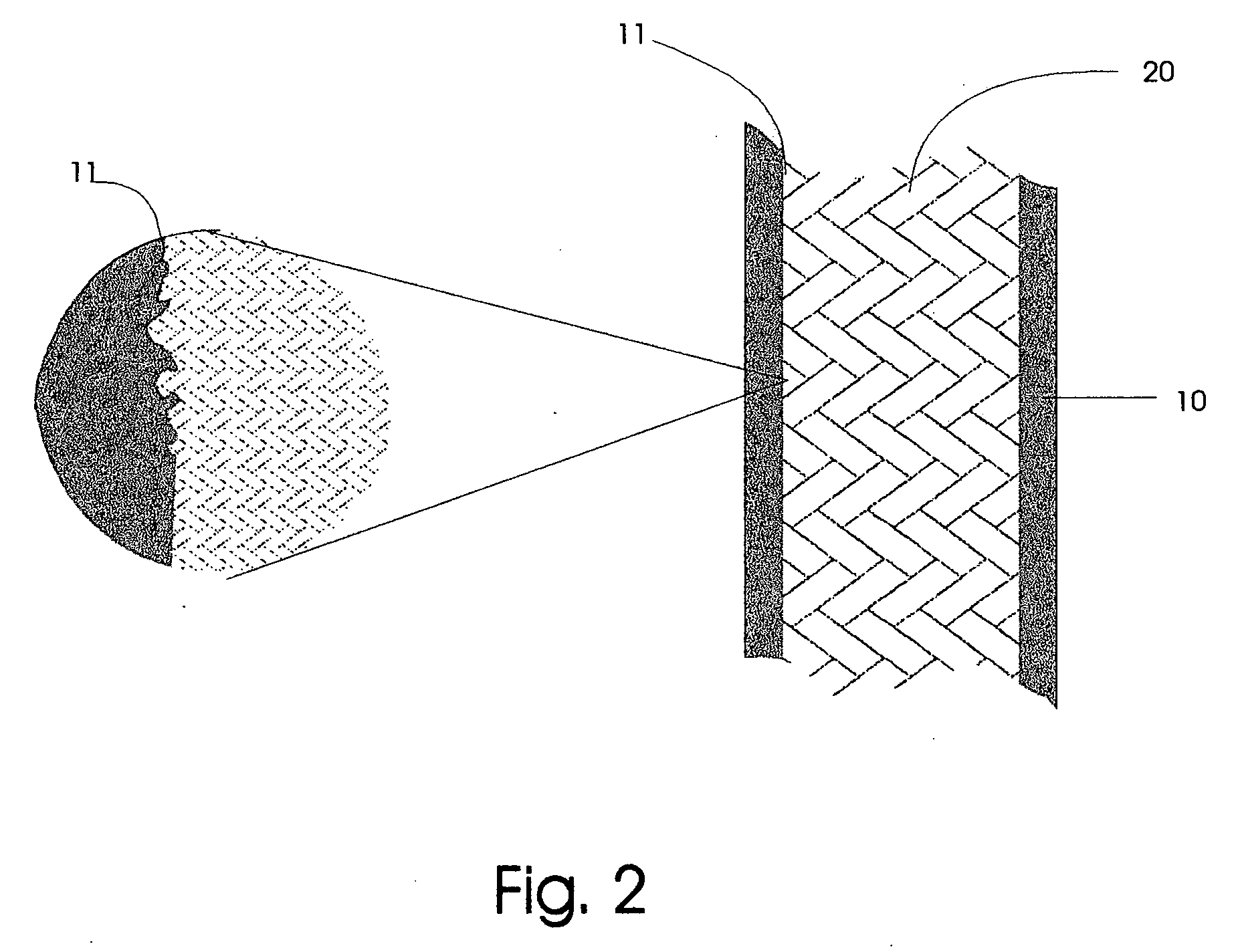Wallless monolith columns for chromatography
- Summary
- Abstract
- Description
- Claims
- Application Information
AI Technical Summary
Benefits of technology
Problems solved by technology
Method used
Image
Examples
example 1
[0024] A silica rod (2.8 mm×100 mm, OD×Length) was inserted into a polyethylene tube (0.32 mm×100 mm, ID×Length). One end of the tube was sealed and the other end was connected to a vacuum pump. After applying vacuum for 10 minutes, the tube was immersed into an oil bath of 140 degree Celsius and kept in the bath till the tube turned to melting state. The tube was then removed away from the bath and cooled to room temperature. The section containing silica monolith rod was cut into a column of 80 mm length and was tested for its structure and chromatographic behavior.
[0025] The cross section of the column showed that the rod was tightly surrounded by the tube and there were no dead spaces between the rod and the tube. When the rod material was removed from the tube and the tube was thoroughly washed, a thin layer of rod material still remained in the interior wall of the tube and could not be washed away, showing the rod exterior surface was permanently intercalated into the tubing...
example 2
[0027] A silica rod (2.8 mm×100 mm, OD×Length) was inserted into a polyethylene tube (0.32 mm×100 mm, ID×Length). Both ends were connected to a vacuum pump and the rod was in the central section of the tube. After applying vacuum for 10 minutes, the section with the rod was immersed into an oil bath of 140 degree Celsius and kept in the bath till the tube turned to melting state. The tube was removed from the bath and cooled to room temperature. The section containing silica monolith rod was cut into a column of 80 mm length and was tested for its structure and chromatographic behavior.
[0028] The cross section of the column showed that the rod was tightly surrounded by the tube and there were no dead spaces between the rod and the tube. When the rod material was removed from the tube and the tube was thoroughly washed, a thin layer of rod material still remained in the interior wall of the tube and could not be washed away, showing the rod exterior surface was permanently intercala...
example 3
[0030] A silica rod (2.8 mm×100 mm, OD×Length) was inserted into a polyethylene tube (0.32 mm×100 mm, ID×Length). The rod was in the central section of the tube. The tube sealed into a tubular chamber with both ends exposed to atmosphere. The tubular chamber was filled with oil and a 4-psi pressure was applied to the oil in the chamber. The oil bath was heated to 140 degree Celsius and kept at this temperature till the tube turned to melting state (about 5 minutes). The oil in the chamber was cooled to room temperature and the pressure to the oil was then released. The rod was cladded in the tube after the process. The section containing silica monolith rod was cut into a column of 80 mm length and was tested for its structure and chromatographic behavior.
[0031] The cross section of the column showed that the rod was tightly surrounded by the tube and there were no dead spaces between the rod and the tube. When the rod material was removed from the tube and the tube was thoroughly ...
PUM
| Property | Measurement | Unit |
|---|---|---|
| Pressure | aaaaa | aaaaa |
| Mass | aaaaa | aaaaa |
Abstract
Description
Claims
Application Information
 Login to View More
Login to View More - R&D
- Intellectual Property
- Life Sciences
- Materials
- Tech Scout
- Unparalleled Data Quality
- Higher Quality Content
- 60% Fewer Hallucinations
Browse by: Latest US Patents, China's latest patents, Technical Efficacy Thesaurus, Application Domain, Technology Topic, Popular Technical Reports.
© 2025 PatSnap. All rights reserved.Legal|Privacy policy|Modern Slavery Act Transparency Statement|Sitemap|About US| Contact US: help@patsnap.com



